Football is a demanding sport that requires attention to player safety. The right gear is crucial in preventing injuries and ensuring player well-being. In this article, we will explore the basics of football gear design and discuss health equipment that effectively reduces the risk of injuries in football.
By understanding gear design fundamentals, players, coaches, and equipment manufacturers can make informed decisions to enhance player safety. We will examine key features and technologies that make football gear effective in mitigating collisions and protecting vulnerable body areas.
Additionally, we will discuss the importance of proper fitting and maintenance of football gear to ensure optimal performance. Equipping themselves with this knowledge empowers players to make informed choices, minimizing injury risk and maximizing game safety.
Key Takeaways
- Gear design plays a crucial role in ensuring player safety and well-being in football.
- Advanced technologies and materials used in gear design help prevent injuries to the head, neck, shoulders, knees, and ankles.
- Proper fit, sizing, and stability in gear design are essential for optimal performance and protection.
- Innovative health equipment, such as impact-absorbing helmets, smart wearable technology, and integration of smart devices, can effectively prevent injuries in football.
Understanding the Importance of Football Gear Design Basics
Football gear design basics play a crucial role in ensuring the safety and well-being of football players. The design of football gear takes into consideration the physical demands of the sport and aims to protect vulnerable areas of the body.
One of the key aspects of gear design is the use of padding and protective materials. Helmets, for example, are designed to absorb and distribute the force of impacts to the head, reducing the risk of concussions and brain injuries. Shoulder pads are designed to protect the shoulders and chest, while also allowing for a wide range of motion.
Additionally, gear design takes into account factors such as ventilation and moisture-wicking properties to keep players cool and comfortable during intense physical activity. Proper gear design is essential for preventing injuries and providing players with the confidence and protection they need to perform at their best.
Key Elements of Effective Football Gear Design
When it comes to effective football gear design, several key elements can make a significant difference in preventing injuries and ensuring player safety. These elements include:
- Protective Padding: Properly designed and strategically placed padding can absorb impact and reduce the risk of injuries, such as concussions and fractures.
- Stability and Support: Football gear should provide stability and support to vulnerable areas, such as the ankles and knees, to prevent sprains and strains.
- Moisture Management: Sweat can accumulate during intense physical activity, leading to discomfort and increased risk of skin irritation. Football gear should incorporate moisture-wicking materials to keep players dry and comfortable.
Common Injuries in Football and How Gear Design Can Help Prevent Them
To effectively prevent common injuries in football, gear design plays a crucial role in providing the necessary protection and support for players.
Football is a physically demanding sport that exposes players to various risks, including injuries to the head, neck, shoulders, knees, and ankles. However, with the right gear design, many of these injuries can be minimized or even prevented.
For instance, helmets with advanced padding and shock absorption technology can significantly reduce the risk of head and neck injuries, while shoulder pads with reinforced construction offer increased stability and protection to the shoulder joints.
Additionally, knee braces and ankle supports can help prevent sprains and strains by providing added stability and support.

Exploring Innovative Health Equipment for Football Injury Prevention
One essential aspect of injury prevention in football is the exploration of innovative health equipment. As the sport continues to evolve, so does the need for advanced gear that can effectively protect players from potential injuries.
Here are three key points to consider when exploring innovative health equipment for football injury prevention:
- Impact-absorbing helmets: A well-designed helmet is crucial for protecting the head from concussions and other traumatic brain injuries. Innovative helmets with advanced padding and shock-absorbing materials can greatly reduce the risk of head injuries.
- Protective padding: Football players often face intense physical contact, making it important to have proper padding in key areas such as the shoulders, knees, and hips. Innovative padding materials that offer both effective protection and flexibility can help prevent injuries during tackles and collisions.
- Smart wearable technology: The integration of smart devices into football gear allows for real-time monitoring and analysis of player performance and health. These technologies can provide important data on factors like heart rate, hydration levels, and impact forces, helping identify potential injury risks and enabling proactive measures to prevent them.
Best Practices for Selecting and Using Football Gear for Maximum Safety
For maximum safety in football, it is important to adhere to best practices when selecting and using football gear.
The first step in ensuring safety is to choose the right equipment for each player’s specific position and needs.
Helmets are essential and should fit properly, with a secure chin strap to prevent head injuries.
Shoulder pads should provide adequate protection and fit snugly to minimize the risk of shoulder and collarbone injuries.
Additionally, players should wear mouthguards to protect their teeth and gums from impact.
Cleats with proper traction are important for maintaining stability and reducing the risk of slipping or twisting an ankle.
It is crucial to regularly inspect and maintain gear, replacing any damaged or worn-out equipment promptly.
Following these best practices will go a long way in maximizing safety on the football field.
Frequently Asked Questions
How Does Football Gear Design Impact Player Safety?
Football gear design plays a crucial role in ensuring player safety. It impacts various aspects such as helmet construction, padding materials, and overall fit. By considering biomechanics and injury prevention, designers aim to minimize the risk of injuries and enhance player performance.
What Are Some Key Factors to Consider When Designing Football Gear?
When designing football gear, key factors to consider include player safety, comfort, and performance. It is important to focus on protective padding, helmet design, and materials that can withstand impact and reduce the risk of injuries.
What Are the Most Common Injuries in Football and How Can Gear Design Help Prevent Them?
The most common injuries in football include concussions, sprains, and fractures. Gear design can help prevent these injuries by providing proper head protection, ankle support, and padding in critical areas of the body.
Are There Any New and Innovative Health Equipment Options for Football Injury Prevention?
Yes, there are new and innovative health equipment options for football injury prevention. These advancements include impact-absorbing padding, helmet technology that reduces concussion risk, and specialized footwear that enhances stability and reduces the risk of ankle sprains.
What Are the Best Practices for Selecting and Using Football Gear to Ensure Maximum Safety?
When selecting and using football gear, it is crucial to follow best practices to ensure maximum safety. This includes choosing properly fitting equipment, regularly inspecting and maintaining gear, and staying up to date with the latest safety standards.
Conclusion
In conclusion, understanding the basics of football gear design is crucial for players, coaches, and equipment manufacturers in order to enhance player safety on the field.
By incorporating key features and technologies that mitigate the impact of collisions and protect vulnerable areas of the body, football gear can effectively prevent injuries.
Additionally, proper fitting and maintenance of gear is essential for optimal performance.
By making informed choices and following best practices, players can minimize the risk of injuries and maximize their safety during the game.
You may also like to read:
How Weekend Addiction Retreats Redefining Health Recovery








